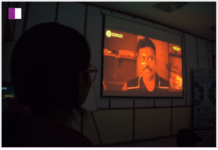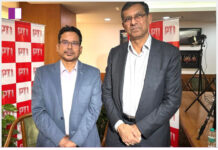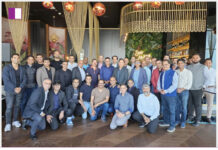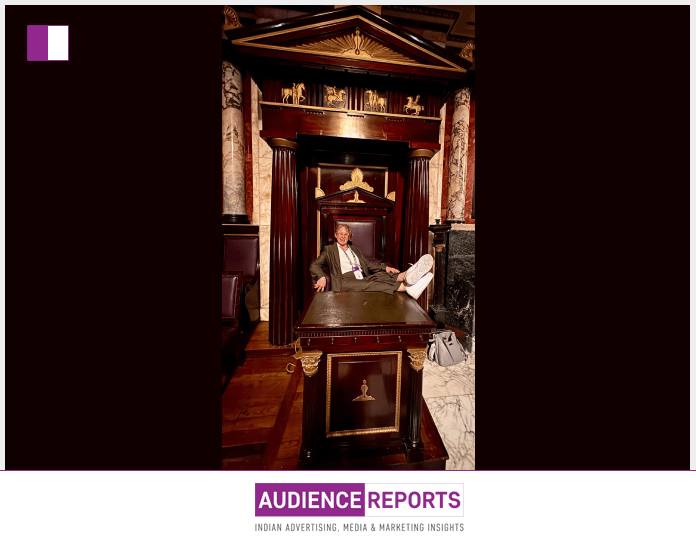Amy Dwyer, Chief Strategy Officer (CSO) and Managing Director at Huble GmbH, recently reflected on a pivotal moment at the Demandbase GO Summit in London. Her LinkedIn post encapsulated key insights from the C-level roundtable she co-hosted, where a significant conversation about the evolving landscape of Go-To-Market (GTM) strategies took place. Amy Dwyer’s message, wrapped in the symbolism of a historic Masonic temple, is not just about strategy but about the need for alignment in an increasingly complex market. It’s a call for adaptability, unity, and embracing the transformative power of technology.
Amy Dwyer’s reflections on GTM strategies are not just a snapshot of the present but a forward-thinking perspective on how businesses must evolve to stay competitive. The rapid integration of Artificial Intelligence (AI) into every aspect of GTM strategy was a recurring theme throughout her post. Amy Dwyer stressed that AI is no longer a luxury but a necessity for businesses looking to lead in this fast-moving environment. It is reshaping how businesses orchestrate their campaigns, personalize outreach, and, most critically, align sales and marketing departments to work together toward high-intent opportunities. As the world of business continues to change, so must our approaches to GTM strategies. This, Amy Dwyer made clear, is essential for survival and growth.
The importance of alignment was a central message in Amy Dwyer’s post, something she drew from her experience co-hosting the event at the Masonic temple a place steeped in tradition yet offering a dramatic setting for innovative thinking. The imagery of big chairs and secret signals reflects the need for strategy and cooperation across various levels within a company. Amy Dwyer pointed out that as shortlists for buyers shrink and their expectations rise, the real challenge for businesses will be in aligning their teams, customers, and technology to meet these new demands.
Amy Dwyer also highlighted how the landscape is shifting from lead-based thinking to a more group-based approach. This is a significant departure from the old model, which focused primarily on individual contacts. Now, as buyers become more informed and independent, the focus has to shift to the buying group as a whole. This change necessitates a broader understanding of the customer journey and the interconnectivity of the various stakeholders involved in a purchase decision. Amy Dwyer emphasized that businesses must understand this shift to build effective strategies that cater to a diverse set of needs and preferences within the group.
Moreover, the challenge of sales and marketing alignment remains an ongoing struggle. Amy Dwyer’s words reminded us that while this is an age-old issue, it is still one of the most significant barriers to success. But, as she pointed out, it is also one of the biggest opportunities. For organizations willing to invest in the necessary tools and communication channels to bridge the gap between sales and marketing, the rewards are immense. The ability to collaborate around a unified vision of the customer, a clear Ideal Customer Profile (ICP), and an agile, data-driven approach will set businesses apart in a competitive market.
What stands out in Amy Dwyer’s insights is her emphasis on adaptability. The market is shifting constantly, and businesses must evolve at the same pace. The traditional ways of doing business are quickly becoming outdated, and it’s clear that to thrive, companies must adopt agile and flexible approaches that respond to market changes in real time. Amy Dwyer’s takeaways from the roundtable are a call to action for business leaders to lead with foresight, to embrace the rapid technological advancements that are reshaping industries, and to keep pace with the evolving expectations of customers.
One of the standout points Amy Dwyer made is the increasing role AI plays in redefining how businesses approach GTM strategies. AI, once seen as a tool for large enterprises, is now becoming accessible to businesses of all sizes. For companies to stay competitive, it’s imperative to integrate AI-driven technologies into their GTM strategies. This will not only allow businesses to personalize their outreach in ways that were previously unimaginable but also to align marketing and sales more effectively, ensuring that both teams are working toward the same objectives. Amy Dwyer’s assertion that AI is “redefining how we orchestrate campaigns” is a key insight for any organization looking to future-proof their strategy.
Another key theme in Amy Dwyer’s post was the shrinking of shortlists. With buyers more informed and independent than ever, the expectation for seamless digital experiences is paramount. Gone are the days of relying on broad marketing tactics to capture attention. Now, businesses must be hyper-targeted, offering customers exactly what they want when they want it. This requires precision in messaging, timing, and delivery, all of which can be achieved through AI and data analytics. As Amy Dwyer noted, AI isn’t just an add-on anymore it is central to crafting these experiences and driving long-term success.
Amy Dwyer’s biggest takeaway from the Demandbase GO Summit was a clarion call to business leaders the winners will be those who can unify their teams around a shared vision of the customer. By aligning teams with a clear understanding of the Ideal Customer Profile (ICP), using data-driven approaches, and adopting a flexible GTM motion, businesses can navigate a constantly shifting market and achieve sustained growth. Amy Dwyer’s insights are a reminder that success in today’s fast-paced world requires agility, alignment, and an unwavering commitment to customer-centricity.
As we look ahead, Amy Dwyer’s words provide a roadmap for how businesses can adapt and thrive in an increasingly complex and digital-first world. Her reflections at the Demandbase GO Summit serve as a timely reminder that strategic alignment, technological adoption, and a clear understanding of the customer journey are all essential components of any successful GTM strategy. For those who heed her advice, the future holds immense opportunities.




































